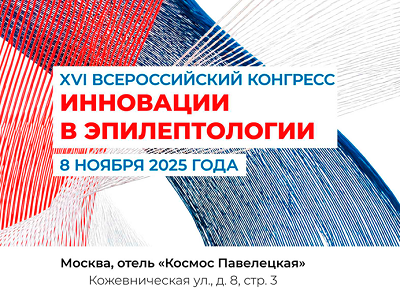FOTOSENSITIVITY IN CHILDREN AND ADOLESCENTS, ESPECIALLY THE COURSE AND TACTICS
Abstract
About the Authors
I. O. ShchederkinaRussian Federation
V. A. Karlov
Russian Federation
References
1. Карлов В.А. , Андреева О.В. Стимулсенситивная эпилепсия. М. 2006; 8-19.
2. Карлов В.А., Гнездицкий В.В., Баярмаа Дондов. Транскраниальная магнитная стимуляция при эпилепсии: показания и противопоказания. Международная конференция «Эпилепсия – диагностика, лечение» М. 2005; 162-167.
3. Карлов В.А. Эпилепсия у детей и взрослых, женщин и мужчин. М.: Медицина, 2010: 720 с.
4. Мухин К.Ю., Петрухин А.С., Глухова Л.Ю. Эпилепсия. Атлас электроэнцефалографической диагностики. М. 2004; 440 с.
5. Петрухин А.С. Эпилептология детского возраста. Руководство для врачей. М. 2000; 624 с.
6. Bickford R.G., Whelan J.I., Klass D.W. Trans. Am. Neurol. Ass. 1956; 81: 100-102.
7. Binnie C.D., Jeavons P.M. Photosensitive epilepsies. J. Roger et al (eds.) Еpileptic Syndromes in infancy, childhood and adolescence.London: John Libber. 1992; 299-305.
8. Clemens B. Dopamine agonist treatment of selfinduced pattern-sensitivity epilepsy. A case report. Epilepsy Res. 1988; 2: 340-3443.
9. Daly D.D., Pedley T.a. Current practice of clinical electroencephalography. 1997. Lippncott– Raven Publishers. 884 c.
10. Kasteleijn-Nolst Trenite D.G.A., van Edme Boas W., Binnie C.D. Photosensitive epilepsy as an age-related genetic disorder. In: Epileptic seizures and syndromes. Eds. P. Wolf.- London. 1994; 41-48.
11. Luders H.O., Noachter S. Atlas epileptic seizures and syndromes. W.B. Saunders company, Philadelfia. 2001; 208 p.
12. Meldrum B.S., Wilkins A.J. Photosensitive epilepsy: integration of pharmacological and psysilogical evidence. In: Schwatzkroin P., Wheal H., eds. Electerophysiology of epilepsy. London. 1984: 51-77.
13. Newmark M.E., Penry J.K. Photosensitivity and epilepsy. A review. New York. 1979; 134 p.
14. Reilly E.L., Peters J.F. Relationship of some varieties of electroencephalographic photosensitivity to clinical convulsive disorders. Neurology. 1973; 23: 1050-1057.
15. da Silva E.A., Muller R.A., Chugani D.C. et al. Brain activation during intermittent photic stimulatioin: a (O)-water PET study on photosensitive epilepsy. Epilepsia 1999; 40 (4): 17-22.
16. Wilkins A.J., Bananni P., Periatti V., Guerrini R. Physiology of human photosensitivity. Epilepsia. 2004; 45(1): 7-13.
17. Wolf P., Goosses R. Relation of photosensitivity to epileptic syndromes. J. Neurol. Neurosurg. Psychiatr. 1986; 49: 1386-1391.
Review
For citations:
Shchederkina I.O., Karlov V.A. FOTOSENSITIVITY IN CHILDREN AND ADOLESCENTS, ESPECIALLY THE COURSE AND TACTICS. Epilepsy and paroxysmal conditions. 2012;4(3):6-13. (In Russ.)

This work is licensed under a Creative Commons Attribution-NonCommercial-ShareAlike 4.0 International License.










































